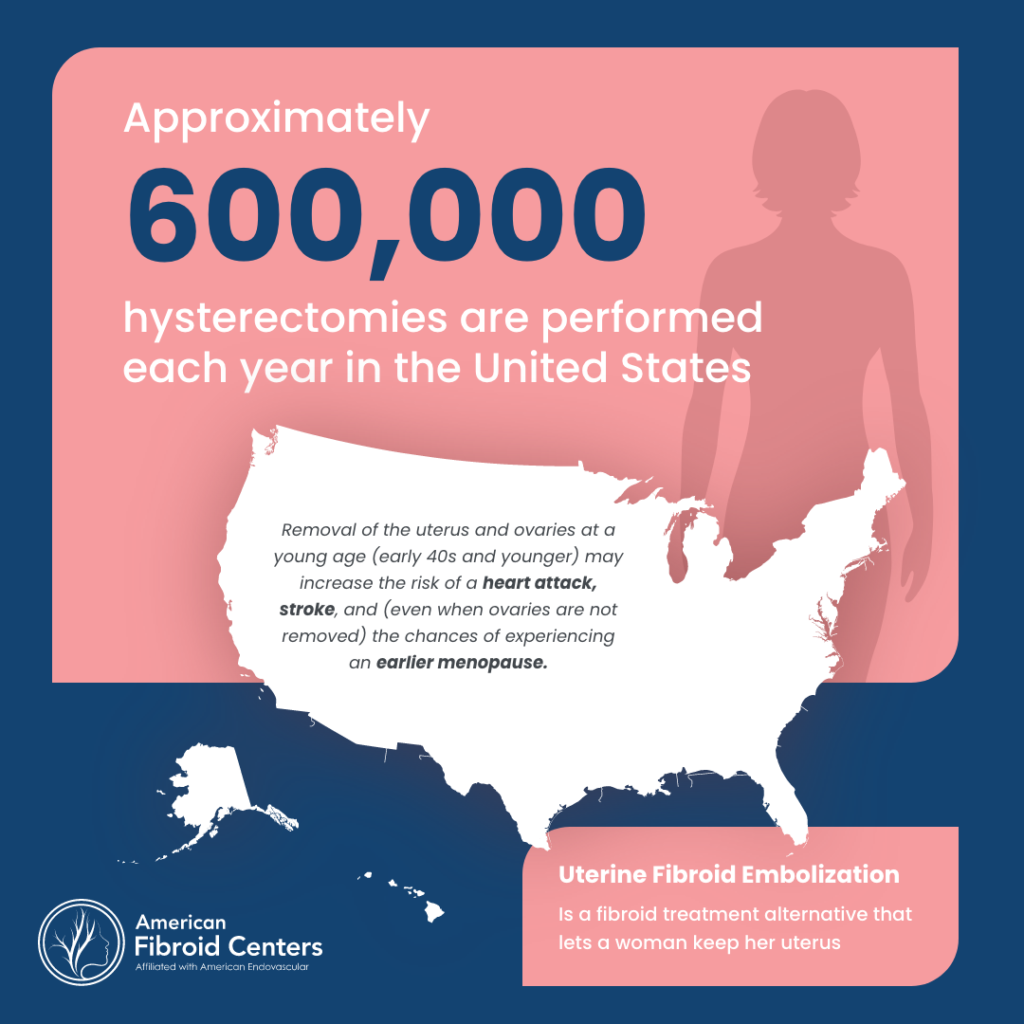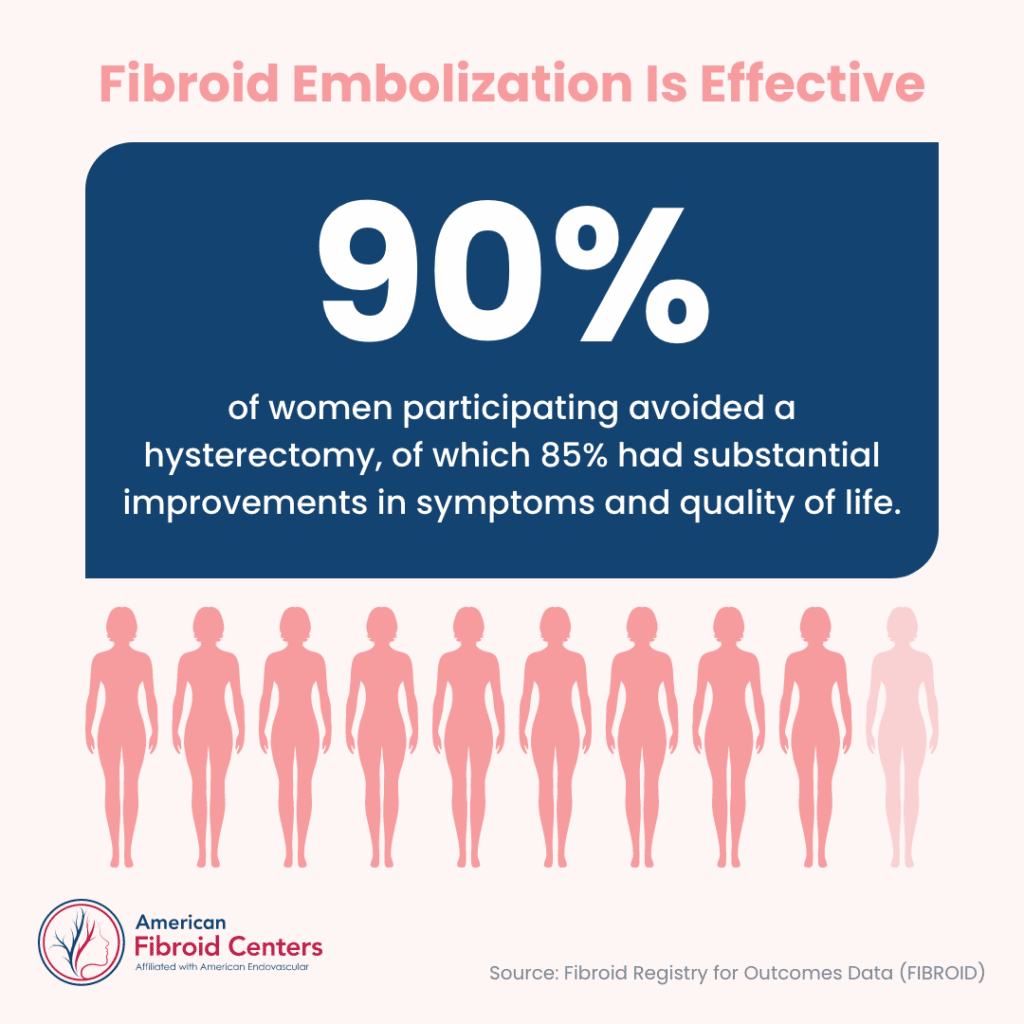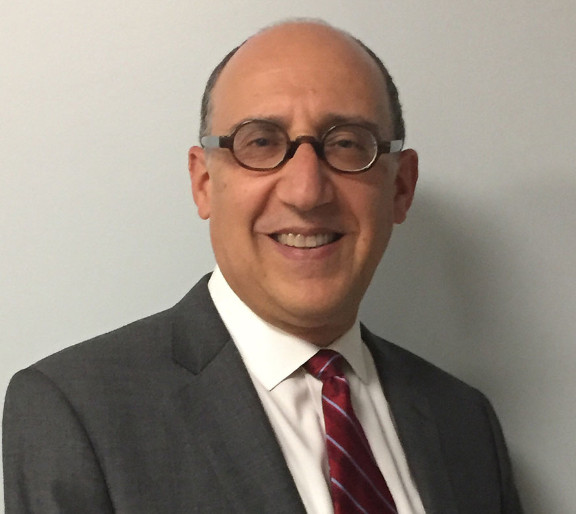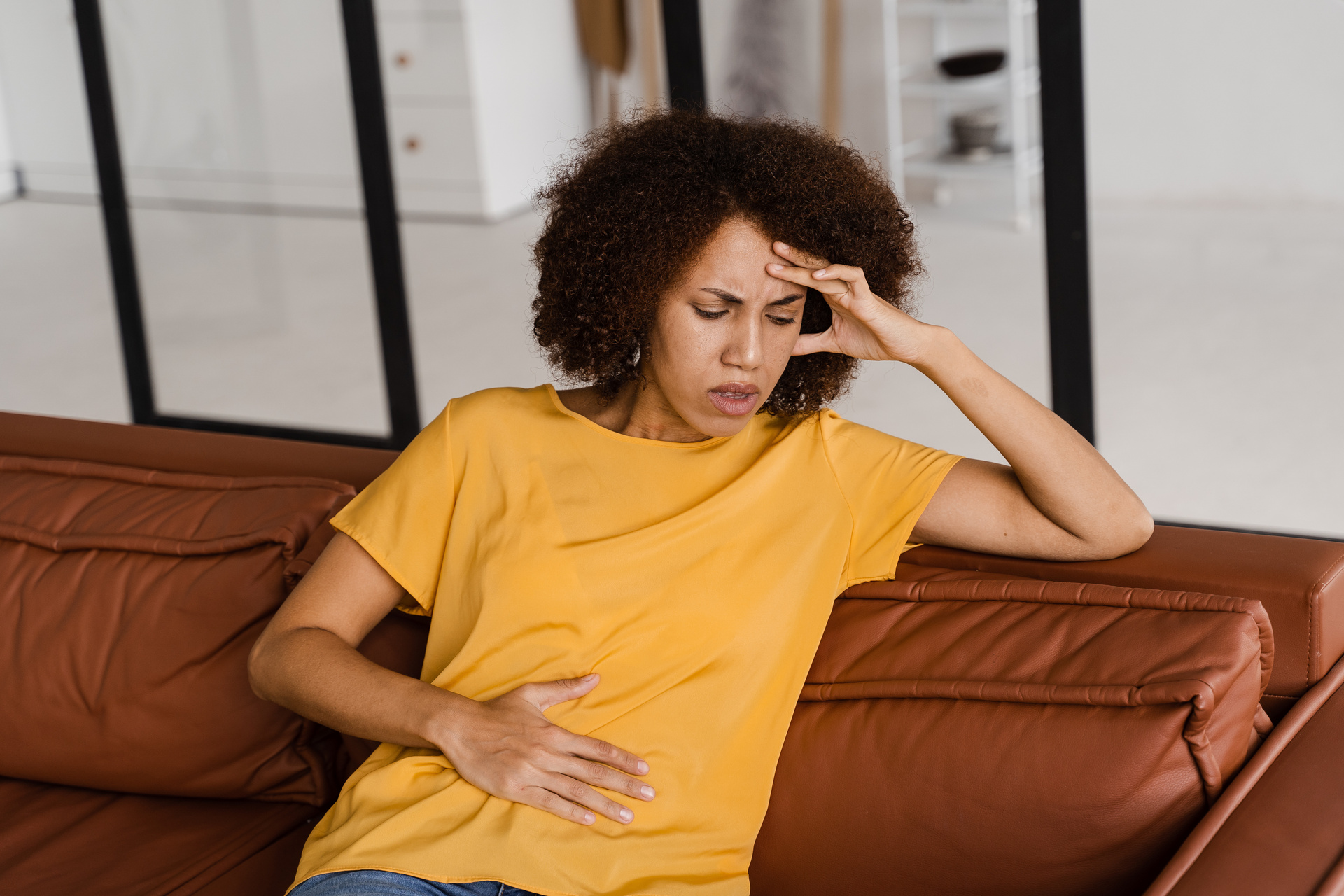
UFE vs. Hysterectomy: Which Option is Best for You?
Women diagnosed with symptomatic uterine fibroids are usually told that a hysterectomy is the only permanent solution. According to the National Institute of Health, more than 200,000 hysterectomies occur each year for the treatment of fibroids. Hysterectomy is a surgical procedure that partially or fully removes the uterus and in some cases, the ovaries as well. This method is not ideal for many reasons including unnecessary removal of the uterus, increased risk of heart attack, stroke, and even the chances of experiencing an earlier menopause.
Fortunately, recent medical advancements, more powerful imaging technology, and treatments such as uterine fibroid embolization (UFE) are making a huge difference in the lives of women dealing with fibroids. The American Fibroid Centers’ affiliated physicians are among the nation’s most experienced in performing UFE, a minimally invasive treatment option for fibroids that preserves the uterus. It involves fewer complications, quicker recovery times, and no hospital stay. Learn more about the differences between UFE and hysterectomy to help you determine the best treatment option for you.

Uterine Fibroid Embolization
One of the main differences between these two procedures is that UFE keeps the uterus intact, giving you the option to have a baby. UFE doesn’t require an overnight hospital stay and is performed with a light sedative rather than general anesthesia. Other benefits of UFE include:
- Preserves the uterus
- Less invasive than surgery
- Light or moderate sedation
- No hospital stay
- Lower risk of complications
- Full recovery in 1-2 weeks
- Does not affect hormones
Hysterectomy
Hysterectomy differs from UFE in several ways. A hysterectomy is a more invasive surgical procedure that removes the uterus and may also remove the fallopian tubes and ovaries. After a hysterectomy, you will no longer have a period or be able to become pregnant. Other differences include:
- Does not preserve the uterus
- Invasive surgical procedure
- Requires general anesthesia
- Requires a hospital stay
- Higher risk of complications
- Full recovery in 6-8 weeks
- Negatively affects hormones
UFE vs. Hysterectomy Procedure
A hysterectomy is a major surgery that removes the uterus to get relief from painful and larger fibroids. However, a hysterectomy may cause permanent changes to your health, including infertility and early menopause. There are three common approaches to a hysterectomy: vaginal, abdominal, and laparoscopic. The length of the procedure will depend on the size of your uterus and if the ovaries and fallopian tubes are being removed as well. In general, a hysterectomy takes about 1-3 hours, and you will be required to stay in the hospital for an average of 2.3 days.
Uterine fibroid embolization is a minimally invasive-image guided treatment for fibroids. It is performed as a same-day procedure and usually takes less than an hour to complete. During UFE, an interventional radiologist makes a small incision in the groin within the femoral artery. A thin catheter is inserted, and tiny particles are injected into the small blood vessels feeding the fibroids. The particles cut off blood flow, causing the fibroids to shrink.


UFE vs. Hysterectomy Recovery Time
Recovering from a hysterectomy takes time. Most patients stay in the hospital for one to two days after surgery. Some women stay in the hospital longer, depending on the type of hysterectomy surgery. Abdominal surgery can take four to six weeks to recover, and vaginal and laparoscopic surgery can take from three to four weeks. However, most women’s recovery from a hysterectomy is about 6-8 weeks in total. Common side effects of a hysterectomy include vaginal bleeding and discharge for 6 weeks, bowel movement changes, bladder function changes, and the onset of menopause. The removal of your uterus can also affect your hormones, causing emotional side effects, such as depression.
However, the recovery time for UFE is quicker than a hysterectomy. Most women can return to normal, daily activities within a week to 10 days after the procedure. Patients can return home the same day to start the recovery process. Women may experience some cramping similar to or worse than menstrual cramping, but that generally subsides within the first couple of days. There is also little to no risk for complications, such as infections, after your procedure. Women after their UFE recovery will experience relief from their symptoms, including pain, heavy bleeding, and bloating.
Which Fibroid Treatment is Right For You?
At American Fibroid Centers, we believe that women should be informed of all available fibroid treatments. If you’re deciding between UFE and hysterectomy, there are a few important factors to consider. Since fibroids are benign tumors and often asymptomatic, invasive fibroid surgery is rarely ever necessary. Women who desire future pregnancy or want to keep their uterus should not undergo a hysterectomy.
Uterine fibroid embolization is a safe, effective, and less invasive treatment option for fibroids that preserves the uterus and ovaries while reducing painful and uncomfortable symptoms. UFE offers several benefits over a hysterectomy and other major surgeries. Around 85-90% who undergo the procedure experience significant improvement in their symptoms and overall quality of life.

Why Choose American Fibroid Centers for UFE?
American Fibroid Centers proudly offers uterine fibroid embolization at our fibroid treatment centers in NY and NJ. Our board-certified fibroid specialists are highly skilled in performing UFE using the most advanced tools and technology. They will work closely with you to ensure you clearly understand the procedure.
Each of our locations has individual patient rooms, cutting-edge operating rooms, and a separate recovery area. You can trust our team to deliver comprehensive and compassionate care before, during, and after your UFE procedure. If you have any questions or concerns, please do not hesitate to reach out.
Our Fibroid Specialists
If you have symptoms of heavy bleeding or pelvic pain and pressure, you can trust our experts at American Fibroid Centers to help you find relief. Our affiliated fibroid specialists have years of experience and are well-renowned in the interventional radiology and vascular field. Patients can trust our team to determine if uterine fibroid embolization is right for them.
What Our Patients Are Saying
Learn more about our patients’ experiences at American Fibroid Centers.
From the Experts
Get to know more about the symptoms, causes, treatment, and care of Uterine Fibroids.












